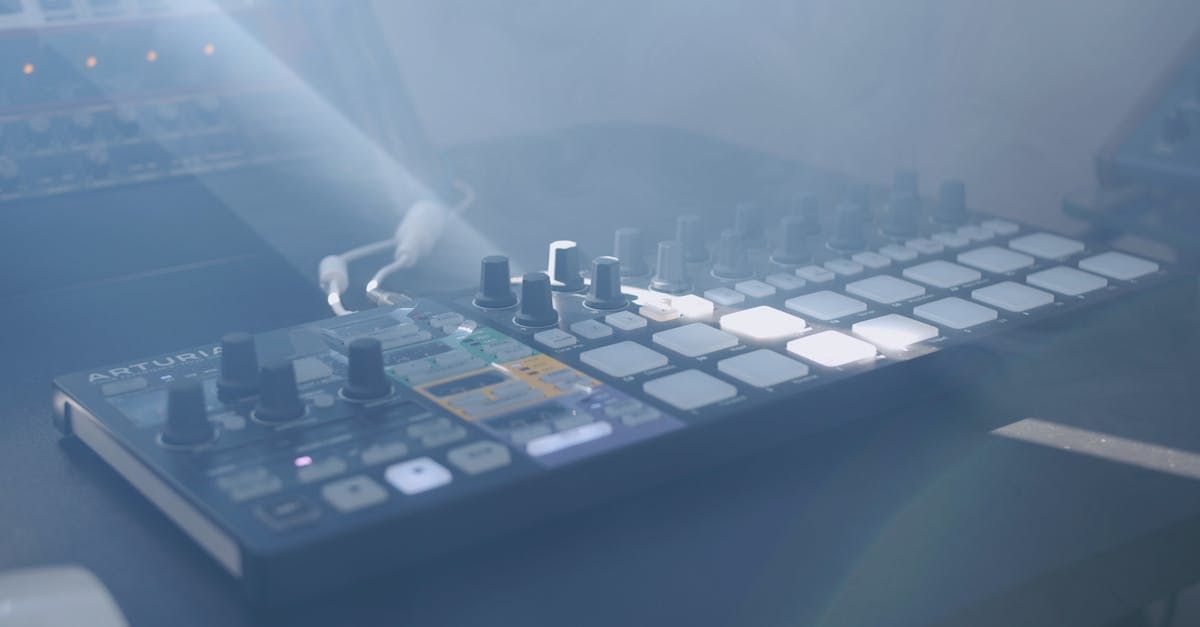What are chord inversions? This basic music theory guide looks at how chord inversions and voice leading chord progressions keep music sounding interesting.

What Are Chord Inversions?
Chords are the harmonious building blocks of all songs. They evoke emotion and provide the foundation for creating melodies. Knowing how to build chords and understanding how they interact with each other is essential when learning basic music theory.
Chord inversions are variations of the same chord. The more notes a chord has the more possible inversions. Create an inversion by transposing notes in a chord to different octaves. Also, the lowest bass note will determine the inversion.
Chord inversions add variation, excitement, and smoother transitions between chords in a progression. Inversions also open new possibilities for building captivating chord progressions and melodies.
Triad Chords
Understanding what makes up a triad is fundamental to all chord theory. Triads are three note chords consisting of the root, third, and fifth notes in a scale.
For example, an A minor triad has the notes:
- A – The root note
- C – The third note in the A minor scale above the root
- E – The fifth note in the A minor scale above the root
Triads are also the foundation for more complex chords. For example, adding a note a third above a triad creates a seventh chord. Continue by adding notes at the interval of a third to build ninth, eleventh, and thirteenth chords.
The Three Triad Inversions
Once familiar with the different chords, the next step in music theory is to learn the possible chord inversions. Triad chords have three possible positions:
Root Position
A chord is in root position when the lowest note is its root note (Root, Third, Fifth). The root of any chord will be the note that corresponds to the letter name of the chord. For example, the root of an A minor chord is A. Therefore, an A minor chord is in root position if the lowest note is an A.
First Inversion
The first inversion transposes the root note up one octave. The third is now the bass note of the chord. For example, an A minor chord in its first inversion has the notes C, E, A (Third, Fifth, Root).
Second Inversion
The second inversion takes the first inversion and transposes the bass note up one octave. The fifth is now the lowest note of the chord. For example, an A minor chord in its second inversion has the notes E, A, C (Fifth, Root, Third).
Inverting Extended Chords
The inversion of notes applies to all chords, including sevenths or other extended chords. The more notes a chord contains, the more inversions are possible. For example, seventh chords add a third inversion, and ninth chords add a fourth inversion.
Why Use Chord Inversions?
Chord inversions minimize the movement from one chord to another. Rearranging the order of notes in a chord creates smoother transitions. Moving shorter distances also makes it easier to play chord progressions on a piano or keyboard. Moreover, playing progressions using only chords in root position sounds jumpy and disconnected.
Rearranging the order of the notes doesn’t affect whether a chord sounds major or minor. Instead, inversions create harmonic variations of the same chord. Furthermore, chord inversions improve the quality of chord progressions. For example, chord inversions add interest, excitement, and complexity that sounds pleasing. They also add a sense of emotion, tension, and release that keeps listeners engaged.
What is Voice Leading?
Now that you know the different chord inversions, apply them when voice leading chord progressions.
Voice leading is the linear movement between melodic lines or chords to create a single musical idea. The concept also allows musicians and vocalists to take advantage of harmonic relationships between notes.
Moreover, voice leading focuses on the smooth movement of notes from one chord to the next using common tones. The concept also minimizes the vertical and horizontal transition between notes in a chord progression or melody. Moving shorter distances sound more natural, smoother, and pleasing. They also make it easier to play chord progressions on a piano or keyboard. Melodic lines or voices that jump around across wide intervals sound jarring and awkward.
Conclusion
Without chord inversions, music wouldn’t sound as compelling and vibrant. Chord inversions add a new dimension to basic and extended chords. They also keep music sounding fresh and interesting.

Turn your passion for music into a Profession: Learn more about our Music School Programs!
Join our Newsletter
Get the the latest music industry insights, invites to exclusive events and workshops, and artist spotlights straight in your email.
MORE ARTICLES FROM THE ICON BLOG
FIND YOUR SOUND, HONE YOUR CRAFT:
Are you ready to turn music into a career? ICON prepares students to become music producers, composers, performers, recording artists, professional DJs, and entrepreneurs in the entertainment industry. Click below to get information about our award-winning programs:


